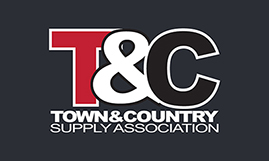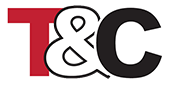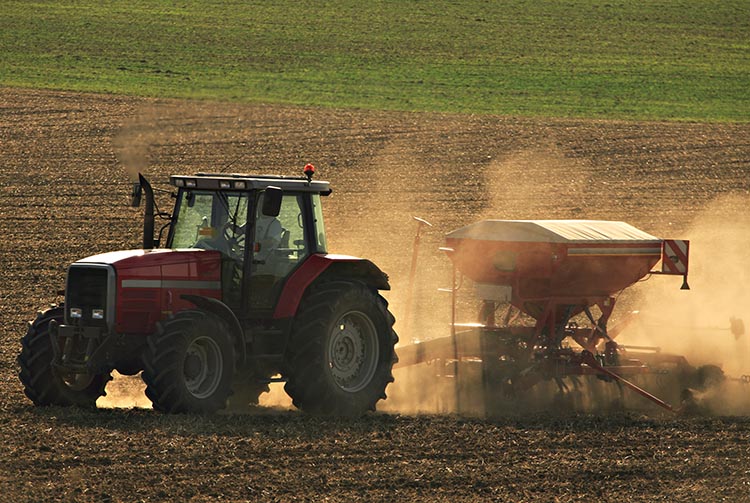More and more in today’s farm industry, farmers are purchasing their own fertilizer spreaders rather than hiring them from the local fertilizer dealer. In the past, most farmers would simply hire the big box rig spinner-spreaders to get the job done, but more often than not, farmers that have the acreage to justify it, are buying the spreaders themselves because it gives them more control over when the fertilizer is spread.
The market has shifted over time because farmers that have 3,000 to 5,000 acres have realized that it will pay for itself over time if they buy a unit and apply the fertilizer themselves. Estimates say that sales of these dry boxes have increased 20-50% among farmers over the last 2 years and are still trending up. The most popular are the trailer drawn units that can be pulled behind a tractor or units that can be mounted on truck frames that they already own. Some farmers are even purchasing the floaters, or commercial truck rigs on the used market.
The impetus for this change has been the change in nutrient management practices. In particular, there has been a push in top-dressing corn. These spinners mounted on high clearance frames give farmers another option as opposed to their more traditional side-dress units. The top-dressing trend may have started because farmers began to search for ways to spread N after wet spring times when some of the pre-plant N gets lost.
Spreaders can also be modified with dividers so that multi-product applications can be done with a single trip. This is excellent because of the increased use of micronutrients such as zinc, boron, and manganese, associated with grid soil sampling. The last decade has seen innovations in the ability to compartmentalize dry fertilizer and vary the rate of each within a dry fertilizer spinner. Prior to that, units such as this got kind of a bad rap because of the uneven application and limited spread radius that they had. It would take simply too much time to fertilize the fields. New designs have taken care of those issues and made them a much more viable product. Ten years ago the maximum spread was around 50 feet. Now you can apply fertilizer at about 90-100 feet and cover a lot more acreage per hour.
When looking to buy a spreader, it is important that you buy a good one and there are certain features that you should look for:
- Variable rate technology. Hydraulically driven controllers automatically adjust the rate of fertilizer that is applied according to the needs of the crop. This package will generally include a display screen, GPS, and mapping software.
- Modern rate controller. This will insure that the rate being entered is the ACTUAL rate being spread. In the past, rate controllers would get out of calibration and a person could end up spreading more of less than the target rate.
- High clearance chassis. This is an important factor if you plan to top-dress corn. Trailer chassis that are high clearance are available and dry boxes can also be mounted on a truck or self propelled sprayer.
- Multiple bins. If you are applying more than one product such as micronutrients or seed, then you should purchase a spreader that is designed with multiple bins or bin inserts. You will find models that accommodate as many as four different products that you can spread at four different rates.
- Tire package. As opposed to standard tires, new large floatation tires will carry more weight to accommodate the spreader. Another option is narrow, row crop tires, the kind you would use on the rear of a 2wd tractor that can run between rows.
- It is important to be ISOBUS complaint and the spreader’s connector will plug right into your tractor’s ISOBUS connector so that the display can recognize the implement being towed.
- Quality of pellets. You will want to make sure and invest in high quality nutrients. The pellets should be uniform in size and shape with little to no dust and debris. This will allow you get the maximum spread width for the fertilizer in an even pattern. You can also buy a kit that tests for size, grade, and hardness.
- Lime capabilities. Certain spreaders will allow for the application of lime. Lime has a more narrow spread width than fertilizer and will have to be recalibrated upon usage.
- Crop canopy reflectance sensors. This allows for figuring the N need of the crop and being able to adjust in real time. The sensors do an excellent job of predicting the N need for corn plants in the V8 or later stage growth. This makes the spinner spreader a good option to spread treated urea ammonium using the sensors because of the high clearance. The V8 stage or later is where these sensors are especially useful.
There are a number of companies that make spinner spreaders, but here is a short list of some of the betters ones at various price points. Make sure and do your research before buying to find the unit that is right for you:
- Adams Fertilizer Equipment
- AGCO
- BBI
- Case IH/Willmar
- Chandler Spreaders
- Doyle
- General Metals
- GVM
- John Deere
- Miller
- New Holland
- New Leader
- Newton Crouch
- RBR
- Simonsen (SMC)
- Speedy Spread
- Vector Mid-South
Once you find the right spreader, give us a call to learn more about the right fertilizer!



